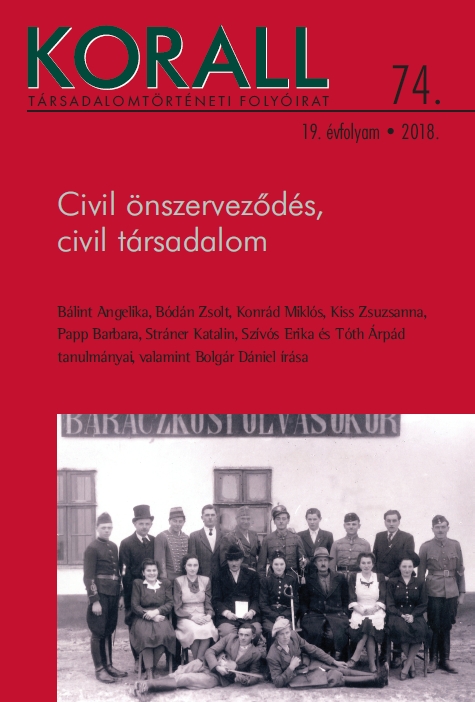A Békéscsabai Casinó a reformkorban
The Casino of Békéscsaba in the Age of Reforms
Author(s): Zsolt BódánSubject(s): Local History / Microhistory, Social history, 19th Century
Published by: KORALL Társadalomtörténeti Egyesület
Keywords: hungary;social history;civil society;local history;
Summary/Abstract: Following the 1827 foundation of the social club named National Casino (Nemzeti Casino), the so-called Age of Reforms in Hungary was also a time of “casino fever.” The debate clubs and book clubs also launched at this time were important forums for spreading the liberal ideals of the age. They played a defining role in helping the fundamentals of democracy gain foothold in Hun- gary, especially by their membership policies cutting across the categories of the estates system and dismantling the boundaries of feudal society. Their libraries contained Hungarian and international literature, and going beyond supporting the case of Hungarian language and literature, they also laid the foundations for an erudite Hungarian readership. The members of these societies had access to the most important journals of the time, which meant that they were well informed about the political and economic news of Hungary and the world, as well as the most recent literary news of the country. These clubs and associa- tions attest to the strengthening of civil society as well: besides their educational purposes, they strove to boost the local economy and social life, and they also proved to be a catalyst of social change through their patronage of charitable activities.The study aims to deepen and nuance the generic picture of reform-age civil organisations found in scholarship, through the example of Békéscsaba's Casino, established in 1842. Following a detailed overview of the operation of this pro- vincial casino before the 1848 revolution, the study provides a detailed insight into the circumstances of its foundation, the practical implementation of the projected aims and ideals, the organisational structure, the methods and strate- gies of the leadership, the composition of the membership and the subscription process, as well as the fabric of the casino (building, facilities, accounts), the library, and the reading habits of the members. The primary source for the study is the casino’s proceedings between 1842 and 1848, augmented by other archival sources from this period and news reporting in the contemporary press.
Journal: Korall - Társadalomtörténeti folyóirat
- Issue Year: 2018
- Issue No: 74
- Page Range: 28-48
- Page Count: 21
- Language: Hungarian

